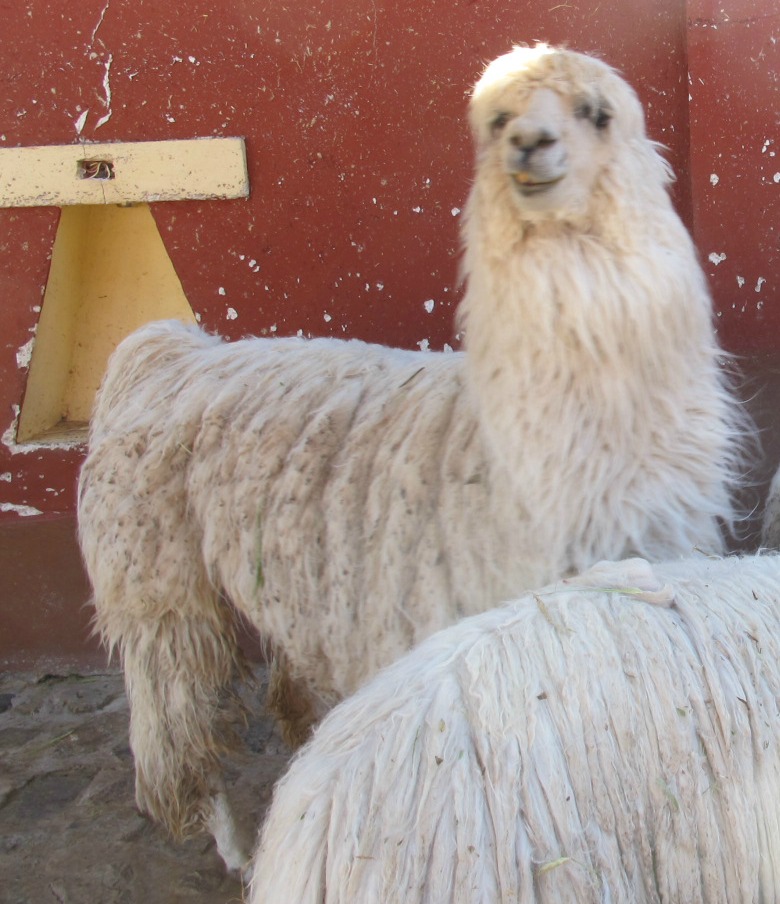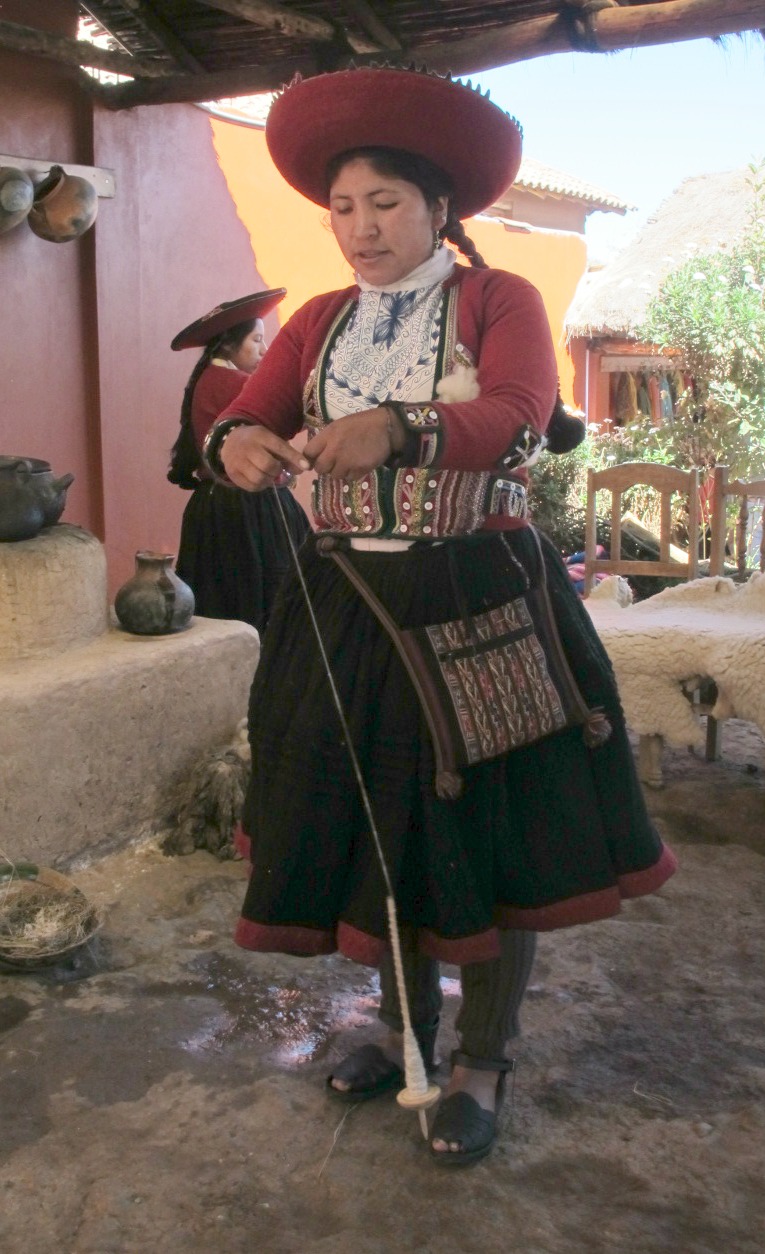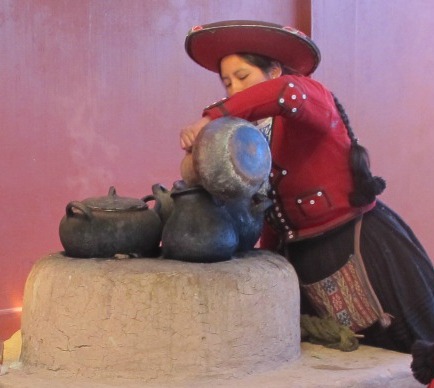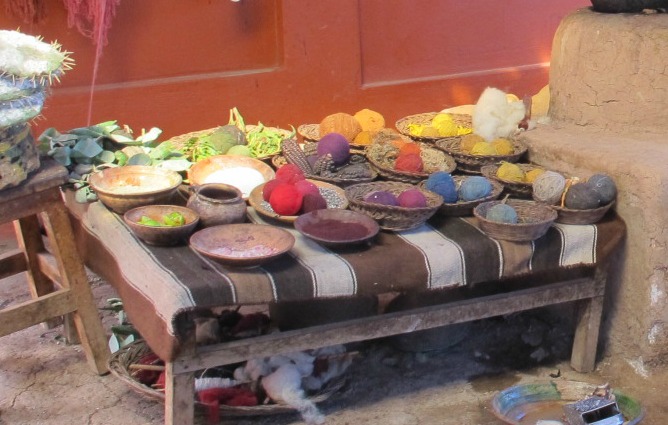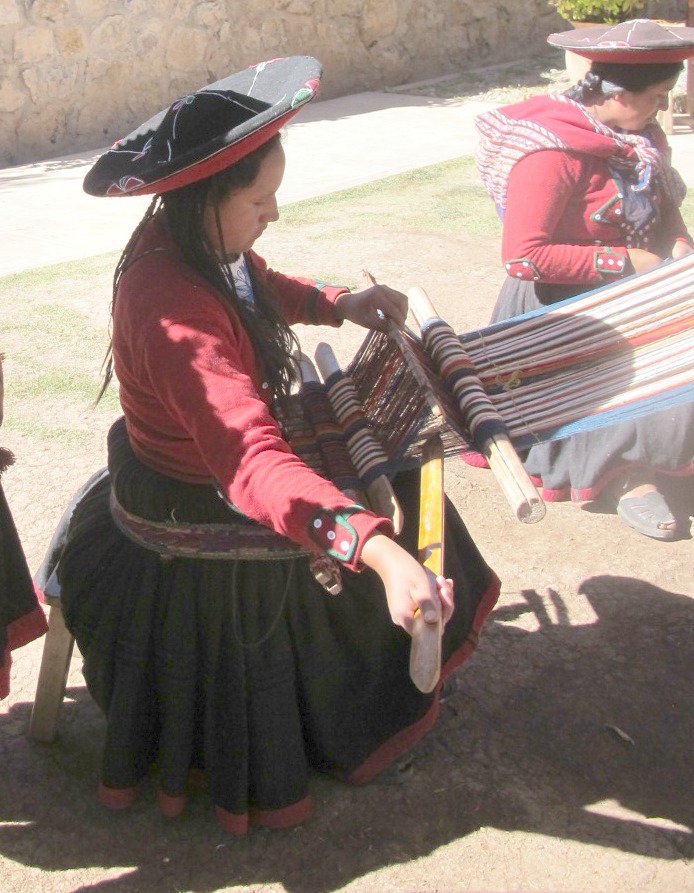I just returned from Peru, a beautiful country that was home to the Inca culture.
Lima is the largest city in Peru, but Cuzco was the center of the world for the Incas, and remains the cultural capital of the country. Just north of Cuzco is a beautiful area known as the Sacred Valley. The Incas revered this land, recognizing that it is some of the most fertile land in the region.
Tucked in the foothills of the dramatic landscape in this Sacred Valley, is the Chinchero district. The people here are mainly indigenous people who speak Quechua, an ancient language that dates before the Incas. They believe the mountains and Pachamama (Mother Earth) are their protectors. Among the rich culture in this area, I found the inherited tradition of weaving.
I visited a small cooperative of 15 families and learned about this art. The people graciously shared some muña tea and explained their processes, which have been conserved for generations. They raise alpaca and harvest their wool.
The wool is washed using a soap handmade from the root of yucca, which they peel and grate.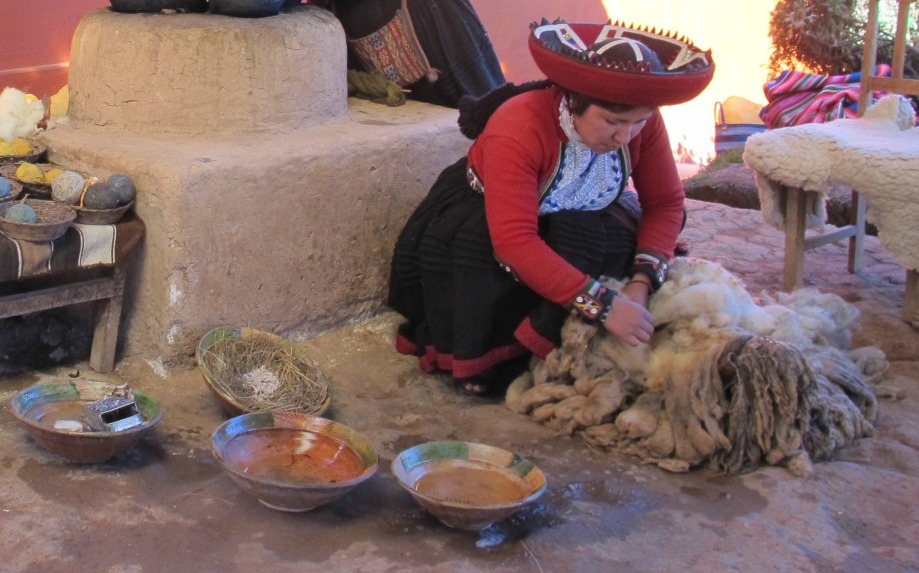
They spin the wool by hand using a drop spindle called a pushqa.
Next, they dye the wool in boiling water using natural dyes which mostly come from plants, but their brilliant red comes from Cochineal, a parasitic insect that lives on cactus.
The colors are symbolic….Red is equated with conquest and blood. Green represents the forests and agricultural growth. Brown is for the soil. Blue represents the sky. Black signifies creation and death. Yellow represents Pachamama, the fertile ground that is Mother Earth and produces corn, which remains important in this culture. Purple is associated with Inca kings and queens, who established and taught the tenets that governed community life.
Finally, they weave the wool into blankets, runners, belts, scarves, etc., incorporating ancient symbols as they have been taught. A single item can take months to weave.
Weavers use backstrap looms and produce textiles with two sides, i.e. they are reversible. They carefully plan their colors and keep track of the two-sided designs in their heads. This is an amazingly complicated process, yet it is completed without written patterns.
The weaving is full of symbolism. A rhombus represents the lake. The condor is a sacred animal representing the world above or heaven. The llama is a holy animal used as a sacrifice to the gods. Two circles represent the two lagoons in Chinchero, as well as the dualism that is deeply rooted in Andean culture, (life/death, male/female, night/day, sun/moon, mountains/valleys.) The serpent is a zigzag shape that represents the world within the earth. The puma stands for this world in which we live. The spiral is a symbol for mother earth.
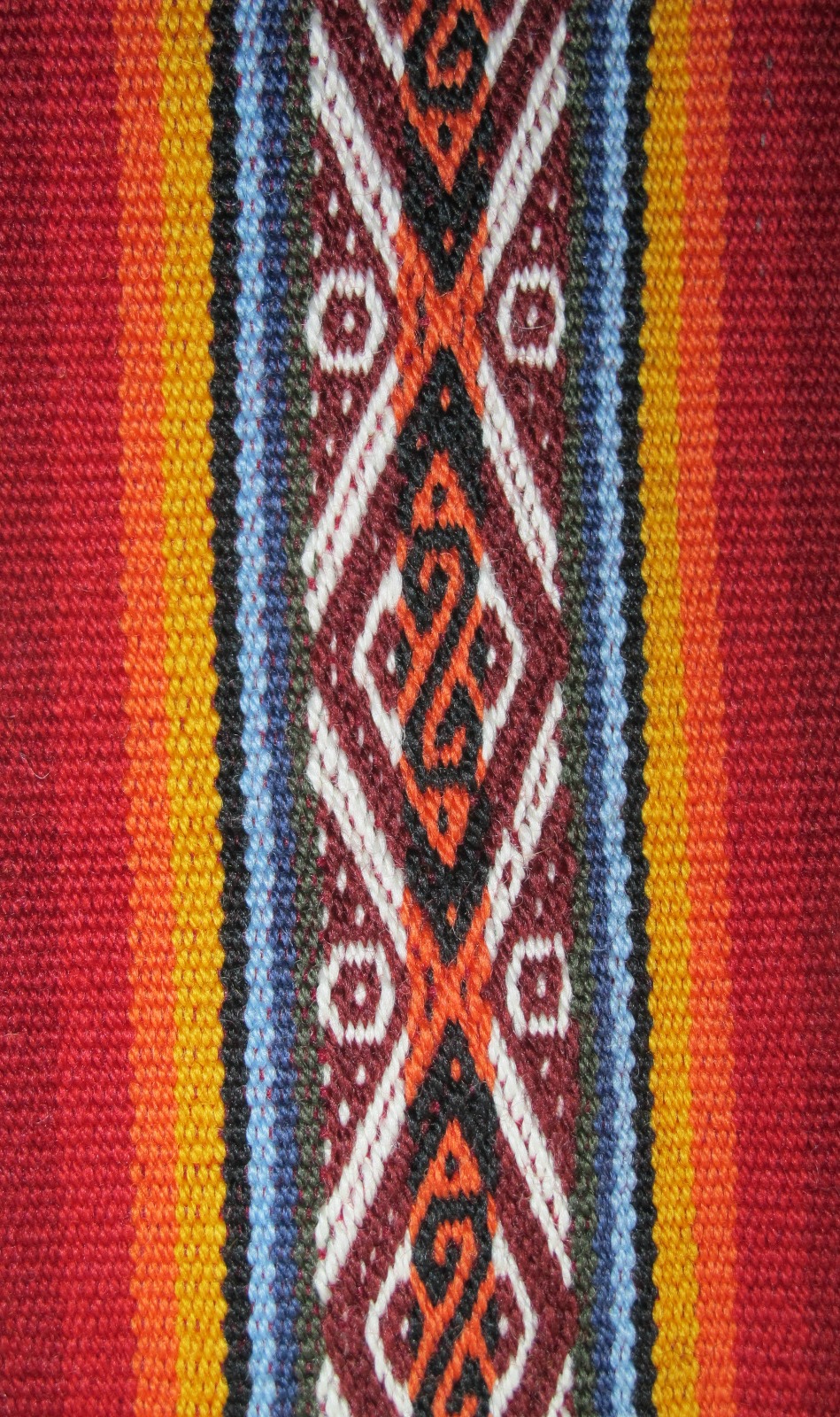
Quechua Symbols: The white cross with the orange center represents the four cardinal points with Cuzco as center of the world. The white circles represent the puma’s eyes. The brown circles/diamonds represent the two lagoons in Chinchero, and the brown points of the diamond represent the mountains. The black symbol is the representation of an agricultural tool.
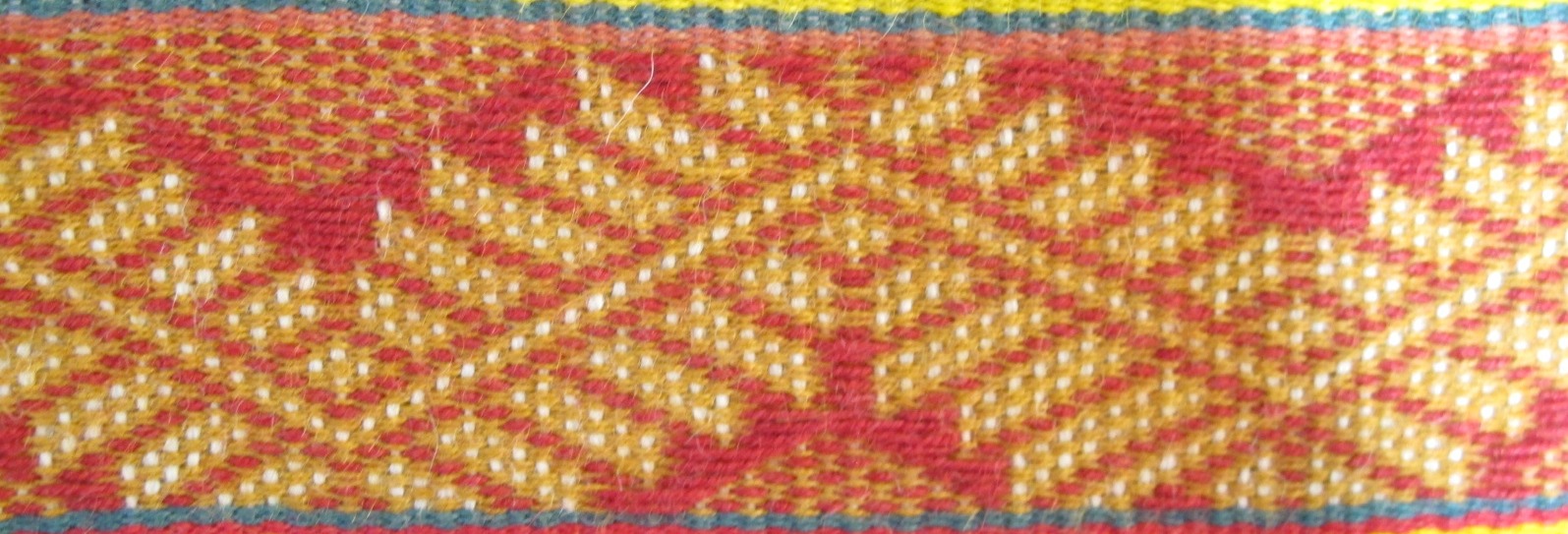
Quechua Symbols: The zig-zag line in this image symbolizes a trail, often the Inca Trail from Cuzco City to Machu Picchu. The stripes surrounding the trail symbol are used to represent Incan steps made out of carved stones.
When they finish the designs in the cloth they often make another piece of cloth that is a tight chord with a design of eyes. This is to provide a reminder of the eyes of the chosen princess. This cord is stitched in and becomes the border of the main cloth, ensuring it has a better finish and will not fray.
In Chinchero, it’s not just about the manufacture of useful textiles. While weaving is important to their sustenance financially, it is more important to the sustenance of their spirit. The symbolism is not trite. It demonstrates deep appreciation of nature. It illustrates that, here, quality of life means quality of spirit; and the weaving is an investment in spirituality, an enduring reminder of what is important to these people.
Live well. Quilt well.
Lisa
